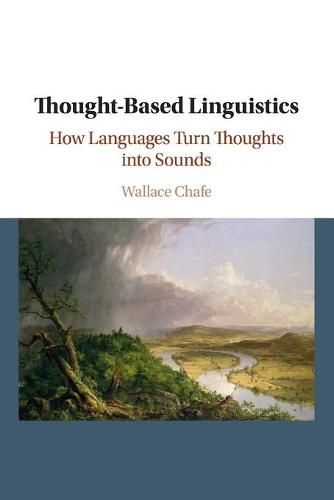Readings Newsletter
Become a Readings Member to make your shopping experience even easier.
Sign in or sign up for free!
You’re not far away from qualifying for FREE standard shipping within Australia
You’ve qualified for FREE standard shipping within Australia
The cart is loading…






The extent to which language is inseparable from thought has long been a major subject of debate across linguistics, psychology, philosophy and other disciplines. In this study, Wallace Chafe presents a thought-based theory of language that goes beyond traditional views that semantics, syntax, and sounds are sufficient to account for language design. Language begins with thoughts in the mind of a speaker and ends by affecting thoughts in the mind of a listener. This obvious observation is seldom incorporated in descriptions of language design for two major reasons. First, the role of thought is usually usurped by semantics. But semantic structures are imposed on thought by languages and differ from one language to another. Second, thought does not lend itself to familiar methods of linguistic analysis. Chafe suggests ways of describing thoughts, traces the path languages follow from thoughts to sounds, and explores ways in which thoughts are oriented in time, memory, imagination, reality, and emotions.
$9.00 standard shipping within Australia
FREE standard shipping within Australia for orders over $100.00
Express & International shipping calculated at checkout
The extent to which language is inseparable from thought has long been a major subject of debate across linguistics, psychology, philosophy and other disciplines. In this study, Wallace Chafe presents a thought-based theory of language that goes beyond traditional views that semantics, syntax, and sounds are sufficient to account for language design. Language begins with thoughts in the mind of a speaker and ends by affecting thoughts in the mind of a listener. This obvious observation is seldom incorporated in descriptions of language design for two major reasons. First, the role of thought is usually usurped by semantics. But semantic structures are imposed on thought by languages and differ from one language to another. Second, thought does not lend itself to familiar methods of linguistic analysis. Chafe suggests ways of describing thoughts, traces the path languages follow from thoughts to sounds, and explores ways in which thoughts are oriented in time, memory, imagination, reality, and emotions.